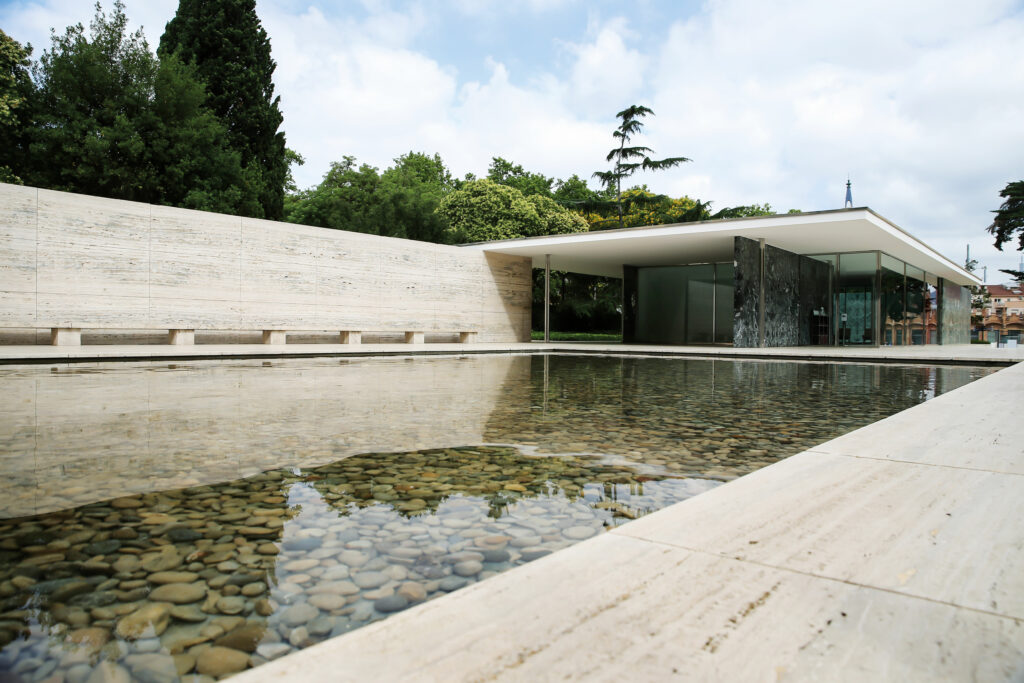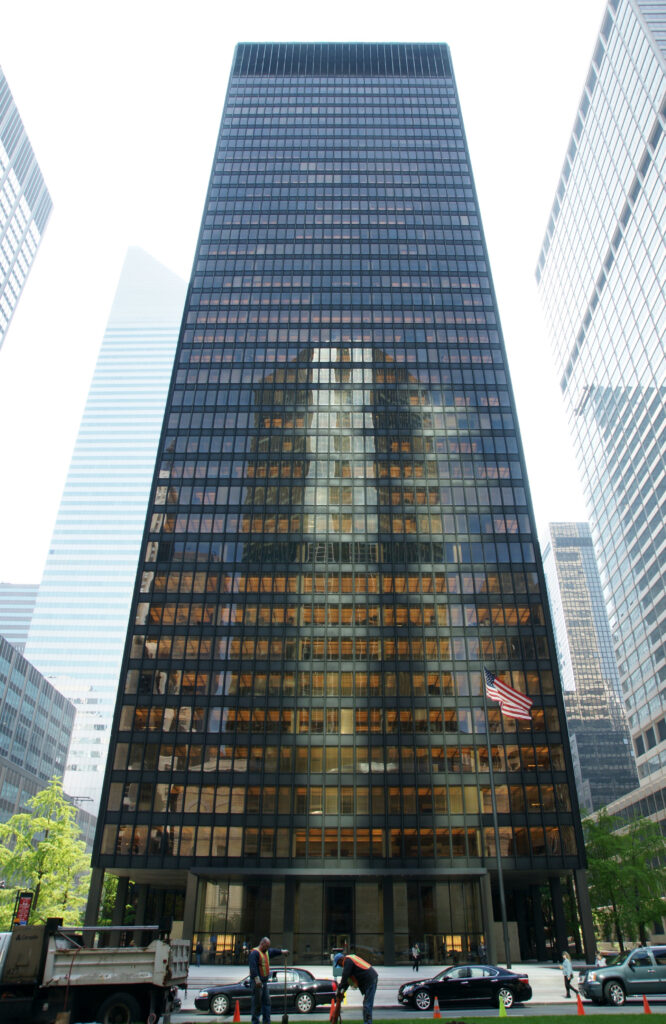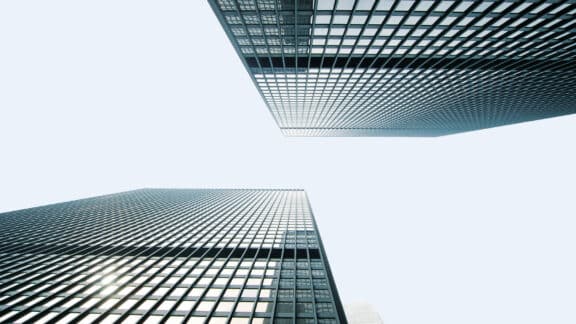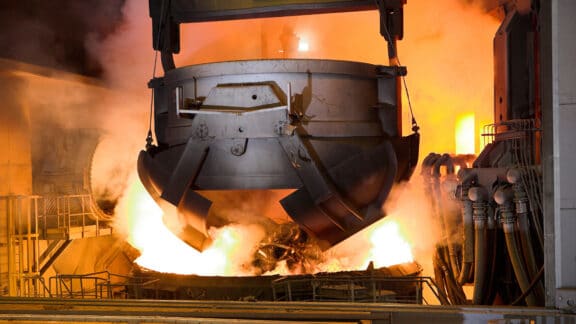At Primetals Technologies, we constantly strive to pioneer new and groundbreaking solutions for the steel industry. We work with passion, inspired by our close partnerships with steel producers from all around the world. Another source of inspiration are the great pioneers that have come before us—innovators who have made a profound impact on the way we live and changed the course of history. In this series, we look at the life, the challenges, and the achievements of some of the most outstanding pioneers of all time, in this case Mies van der Rohe.
A fixture of the metropolis worldwide, the skyscraper has become a symbol of the modern city. Towering steel and glass structures disappear into the clouds reflecting the sky itself. The history of the skyscraper and our great cities is part of the history of modern design. Among their champions, including Frank Lloyd Wright, Le Corbusier, and Walter Gropius, stands Ludwig Mies van der Rohe.
From his humble beginnings as the son of a stonecutter, Mies van der Rohe would become one of the defining influences of what is known as “International Style.” As the name indicates, this global phenomenon of post-war architecture spread globally, bringing steel, glass, and concrete to skylines in a grand fashion. Unlike many of his friends and colleagues in architecture, who later shifted away from International Style, Mies remained true to his belief in the freedom afforded by steel and glass.
The First Syscraper
Mies’ journey until the design of his first skyscrapers began after his move to Berlin in 1905. While working as an apprentice under Bruno Paul, Mies completed his first independent commission, a house for Alois Riehl—a philosopher and university professor. The design impressed architect Peter Behrens, the leading German architect, graphic, and industrial designer most known for his work with the Allgemeine Elektricitäts-Gesellschaft (AEG). Peter Behrens’ office attracted the likes of Walter Gropius and Le Corbusier, with whom Mies woud remain acquainted throughout his career. Despite his claims of frustration working for Behrens, Mies took many of the principles of Behrens’ designs and early twentieth-century architecture with him.
Following World War I, Mies returned to Berlin to find the city buzzing with the Avant-Garde movements of Expressionism, Constructivism, de Stijl, and the newly founded Bauhaus. Immersed in the vibrant art and design culture, Mies met artists and graphic designers, including Theo van Doesburg and El Lissitzky. In 1921, Mies participated in a competition to design a high-rise office building on Friedrichstraße in Berlin. His design was dismissed due to its unusual choice to cover the entire building in a glass “curtain.”
- … the tallest steel skyscraper in the world is the Willis Tower in Chicago, completed in 1974, which uses the same structural principles as the Burj Khalifa in Dubai, currently the tallest building in the world.
- … construction projects account for more than 50 percent of global steel demand, including structural steel, reinforcing bars (rebar), and sheet products—not to mention the steel used as part of the heating and cooling equipment and even interior fixtures.
- … structural steel is often the material of choice by environmentally conscious architects. For example, structural steel produced in the U.S.A. contains 93 percent recycled scrap; almost all of that steel can be recycled at the end of a building’s lifetime.
- … corten steel, or korten, produces a self-protecting rust layer or “patina.” Corten steel is also weathering steel and is often an aesthetic choice for architects and designers who want to use the matured rust color as part of their design.
- … while iron dominated the construction industry, Bessemer steel began to make headway with large projects during the 1880s, including the Brooklyn Bridge in New York and the Home Insurance Company Building in Chicago.
The design reflected Mies’ concept of “skin-and-bones” architecture (discover more here), which hinged on the idea that the steel skeleton could free the exterior walls from their load-bearing function. Mies was inspired by structures being built in the United States and found the exposed steel skeletons had a sublime effect. Although this design would never come to fruition, Mies’ concept would influence his later projects.
I think steel is a fine material. By fine, I mean it is very strong. It is elegant. You can do a lot with it. The whole character of the building is very light. This is why I like it when I have to build a building in a steel construction.”
Mies van der Rohe
Conversations with Mies van der Rohe
(2008) by (2008) by Moisés Puente
The Future of Architecture
The impact of Mies’ concept for the skyscraper rests in its pioneering vision for solid structures, freeing up space and creating an interplay between the interior and exterior of buildings. His cooperation with various organizations, notably the Deutscher Werkbund (German Work Federation) and CIAM (Congres Internationaux d’Architecture Moderne), would help expand his status as a world-renowned architect. As his notoriety grew, he was invited, alongside Lilly Reich, to work as the artistic director for the German section of the Barcelona International Exposition in 1929.

Known as the “Barcelona Pavilion,” Mies once again shook the architectural world with his elegant, sleek, and open design. The Pavilion strikes a balance between interior and exterior space, reminiscent of the glass façade in his skyscraper design, using glass to reveal the inner structure of the building. Here, the Pavilion’s low roof and large glass windows create a series of frames through which one experiences this dramatic piece of architecture. The materials of the Pavilion are also essential and broken down to the fundamentals of architectural design, that is, marble, steel, chrome, and glass. The beautiful interplay of manufactured and natural materials makes the Pavilion a reflection of the future of architecture.
Steel in Architecture
After the Exposition in 1929, Mies would run the Bauhaus from 1930 until 1933. In 1938, Mies emigrated to the United States and became the head of the architecture program at Armour Institute of Technology, later Illinois Institute of Technology. In the United States, Mies’ interest in steel as a material and its incorporation into his designs would flourish.
After his exhibition at the Museum of Modern Art in New York in 1947, Mies was commissioned by Herbert Greenwald, a developer, to design several apartment buildings in Chicago. Amongst them are perhaps two of the most famous buildings in Chicago today, 860 and 880 North Lake Shore Drive. By today’s standards, the 26-story apartment towers on Lake Michigan are perhaps not what comes to mind regarding skyscrapers, but their exposed steel elements and glass façade began to realize Mies’ 1922 ideas. The exposed steel elements reflect the interior structure of the building, playing with interior and exterior spaces and putting the structural steel skeleton on display amongst pieces of reflective glass that shield the interior from immediate interpretation.
“Less is more”
The twin North Lake Shore Drive apartment buildings were just the beginning of Mies’ realization of the skyscraper. Less than a decade later, Mies’ gained the opportunity to design and construct a building in New York City. The Seagram Building is set back off of the famous Park Avenue in Manhattan by a beautiful and intentional plaza. The drama of the building’s design is in its reserve, allowing people to experience its verticality as they approach it across the famed marble plaza. With windows framed by dark brass I-beams representing the interior steel skeleton, the brass complements the marble of the plaza, drawing one’s eyes upward. The Seagram Building reveals the minimalist character of International Style and harmony between interior and exterior space. The 38-story building embodies Mies’ philosophy of “less is more,” favoring simplicity and highlighting the structure itself for its aesthetic presentation. Although Mies was not the inventor of the phrase “less is more,” it was a motto he would often recite, particularly to his students.

Today, the impact of Mies’ pioneering ideas is as undeniable as universal. Despite the late twentieth-century critique of International Style, architects still value Mies’ concepts of construction and the interplay between interior and exterior space. One can easily see Mies’ impact in the playful transformation of “less is more” into “Yes is More” by BIG architect Bjarke Ingels. Inspired by the minimalism of Mies’ designs, Ingels took the concept of an interplay between interior and exterior and the natural and the manufactured one step further. Ingels’ designs often take the urban and industrial landscapes and transform them into recreational oases. For example, CoppenHill or Amager Bakke in Copenhagen rearranged the equipment of a waste incineration facility and placed a functional park, ski slope, and much more atop the facility, designed to turn a previously uninviting industrial area into an urban retreat.
EXPLORE MORE
Read “Skin-and-Bones: Steel in Architecture” here.
Timeline
1886
Born Maria Ludwig Michael Mies March 27 in Aachen, Germany, the son of a marble worker, Michael Mies, and Amalie Rohe.
1899
Mies attends the Spenrathschule, the trade school, in Aachen for two years. After dropping out seeks to hone his own skills in practice.
1891
Worked as an apprentice at local building sites and then four years in several Aachen ateliers focusing on ornamentation.
1907
After moving to Berlin in 1905, impresses Peter Behrens with the Alois Riehl House. Meets Walter Gropius and Le Corbusier.
1922
Submits his design for a steel and glass skyscraper for Berlin’s Friedrichstraße.
1929
Art director for the German Pavillion alongside interior designer Lily Reich at the Barcelona International Exposition in 1929
1938
November 20—Armour Institute of Technology celebrates the new head of their architecture program
1958
Completion of his most accurate realization of his original skyscraper designs, the Seagram Building, Manhattan, New York
1968
Completion of the Neue Nationalgalerie in Berlin, health in rapid decline
1969
Died August 17, age 83, six weeks after Walter Gropius


